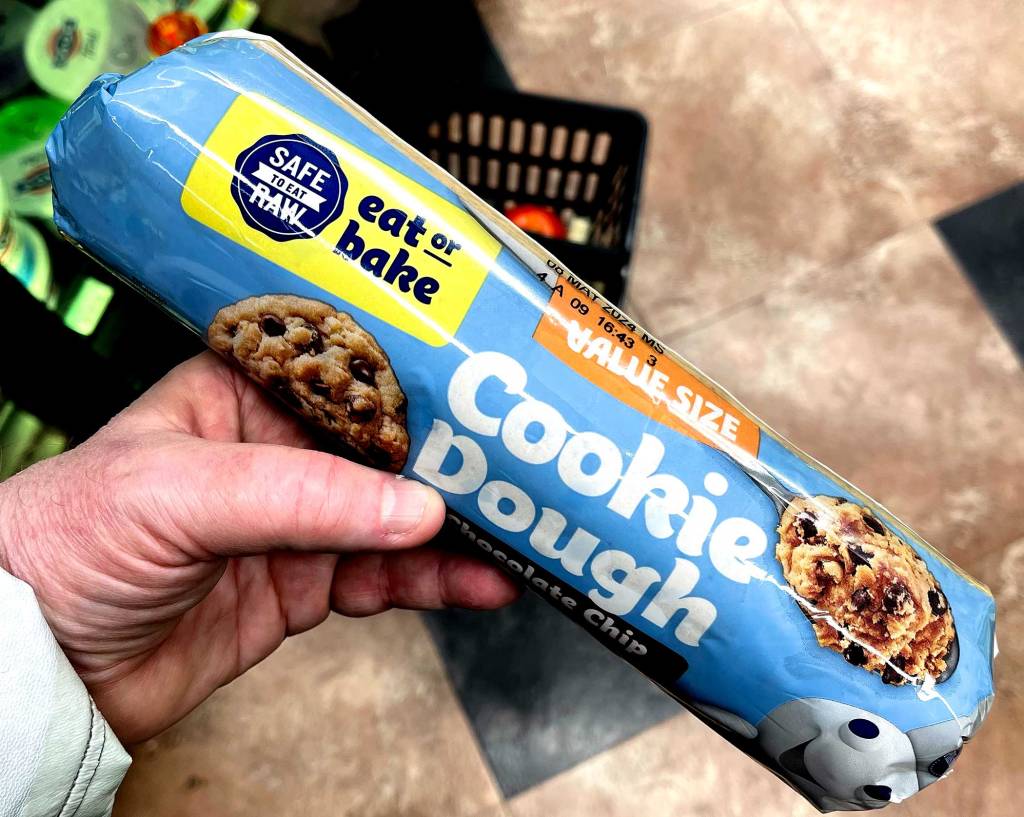
I always thought it was more fun to live dangerously and eat raw dough. Now, I have to lick the cake batter off the beaters to obtain the same high!

I always thought it was more fun to live dangerously and eat raw dough. Now, I have to lick the cake batter off the beaters to obtain the same high!
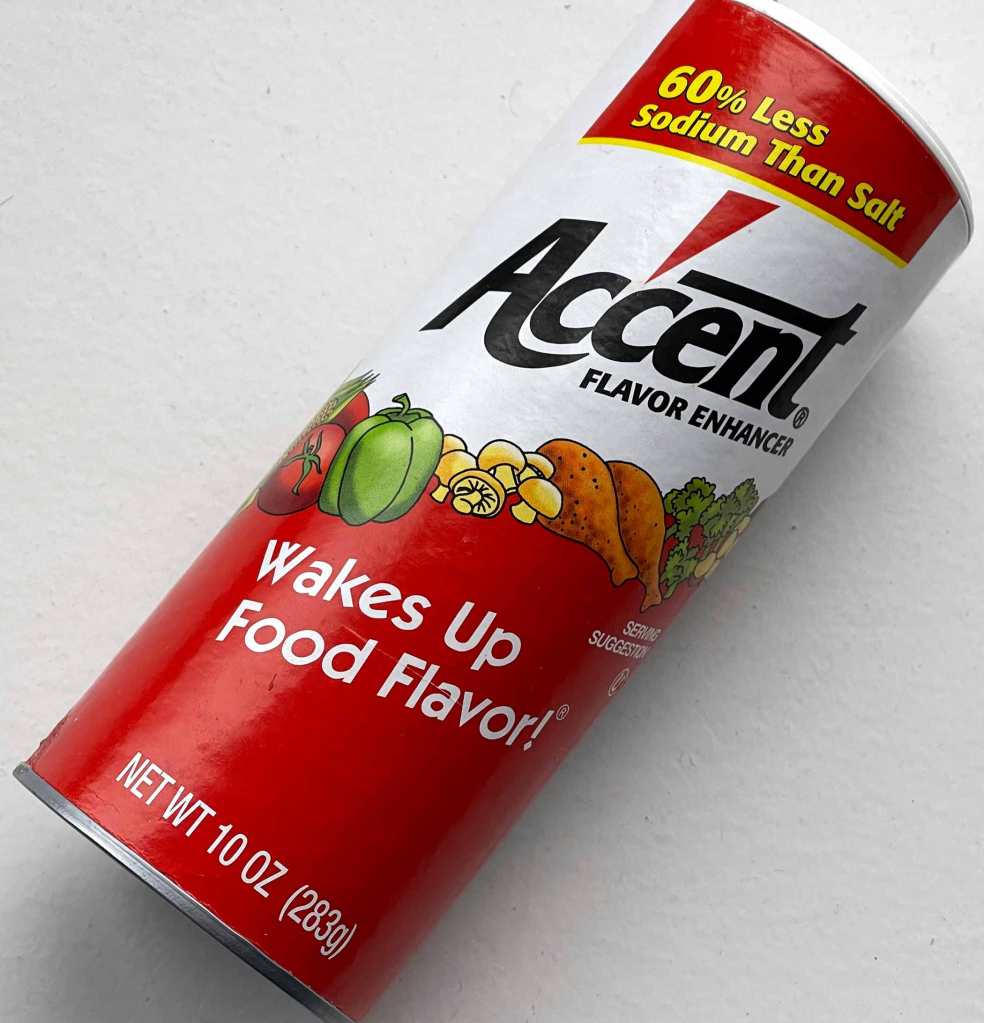
Monosodium glutamate, commonly known as MSG, has long been a subject of culinary debates, often misunderstood and maligned. Yet, this seasoning, heralded for its unique flavor-enhancing properties, deserves a moment in the spotlight for its fascinating history and culinary significance.
My journey with MSG began in childhood. The celery in the chicken chop suey at Chinese restaurants always had an irresistible taste that our home-cooked meals couldn’t match. The secret ingredient? MSG. It was a revelation when my mother introduced Ac’cent, a famous MSG brand, into our kitchen. Suddenly, our dishes were transformed, brimming with an indescribable savory depth.
MSG’s history dates from 1908, when Japanese chemist Kikunae Ikeda identified the unique taste of kombu seaweed broth. He named this taste “umami,” which translates to a pleasant savory flavor, and it is now recognized as the fifth taste alongside sweet, sour, bitter, and salty. Ikeda’s discovery helped to produce MSG, derived from natural substances like sugarcane or beets, through a fermentation process like yogurt or vinegar.
Despite its natural origins, MSG has been a controversial ingredient. In the late 1960s, “Chinese Restaurant Syndrome” emerged, describing symptoms people attributed to eating food with MSG, particularly in Chinese cuisine. This led to widespread stigma and unfounded fears about MSG’s safety. However, decades of research have discredited these claims. The U.S. Food and Drug Administration and many scientific studies have affirmed MSG’s safety, debunking the myth of Chinese Restaurant Syndrome just as the alleged dangers of salt have been reassessed.
MSG’s ability to enhance flavor without adding saltiness is a culinary game-changer. It has a unique capacity to balance and round out the overall perception of other tastes. MSG is a magical ingredient for those who love to cook. Whenever I reach for salt, I choose a sprinkle of MSG instead, knowing it will elevate the dish to a new level of deliciousness.
It’s important to note that MSG imparts the umami taste, a profound, brothy, and meaty flavor that brings complexity to dishes. This “fifth taste” is why foods like tomatoes, cheese, and mushrooms are so satisfying. MSG replicates and intensifies this natural umami, making it an invaluable tool in the kitchen.
Next time you’re seasoning your meal, consider reaching for the MSG – you might be surprised at the depth of flavor it adds to your culinary creations.
WANT TO KNOW MORE?
How MSG got a bad rap: Flawed science and xenophobia
The strange case of Dr. Ho Man Kwok

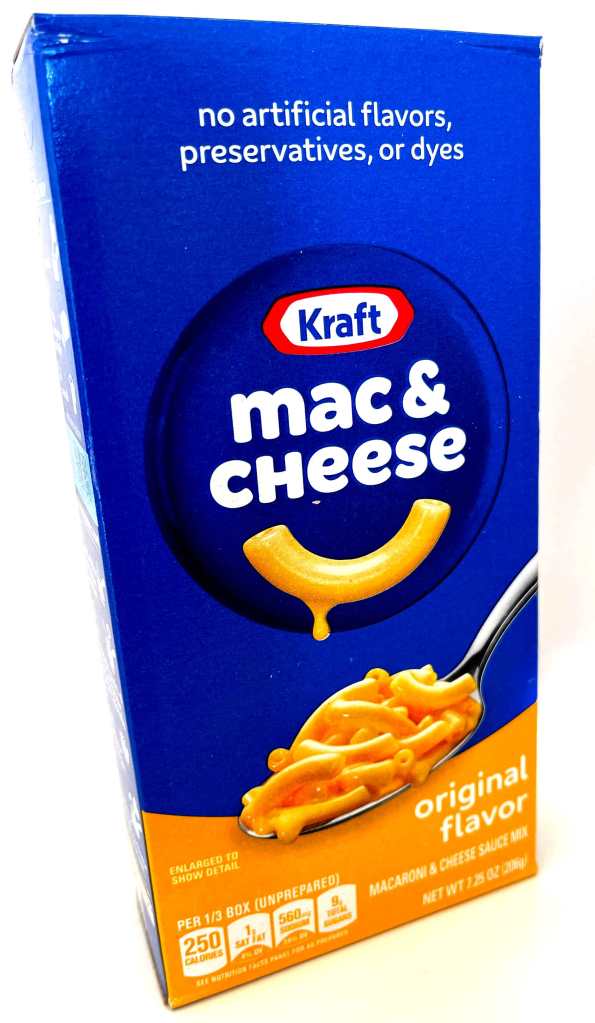
As a long-time fan of Kraft Macaroni & Cheese, I feel compelled to voice my thoughts on their recent packaging redesign. Change is inevitable, but sometimes, it doesn’t sit right, especially when it alters something as iconic as Kraft’s packaging. Here’s my take on the new look and why it misses the mark for me.
Firstly, the revamped Kraft logo. The shift to lowercase letters might seem like a minor tweak, but it’s a significant departure from the brand’s heritage. There’s something about the original, all-caps KRAFT that exuded a sense of reliability and tradition. This new, softer version feels like it’s trying too hard to be modern and approachable, losing a bit of its identity in the process. Seeing a brand with such a storied history feel the need to downplay its legacy in pursuing trendiness irks me.
Speaking of tradition, I’ve always appreciated how the product was officially named “Kraft Macaroni and Cheese Dinner.” It’s a nod to the product’s long-standing place in American culinary culture. This subtle acknowledgment of its roots added a layer of authenticity to the brand. Changing or simplifying this feels like a disconnect from the tradition that made Kraft a household name.
Moving onto the actual product, the cheese sauce now looks too gooey for my liking. There’s a fine line between creamy and overly viscous; unfortunately, the new visual representation crosses that line. It doesn’t evoke the same comforting, homey vibe the previous version did.
And now, the elephant in the room: the powdered cheese. It’s no secret that Kraft has been stingy with the cheese included in each box. What’s more, Kraft sells its powdered cheese separately, suggesting various uses like sprinkling it on salads or popcorn – but curiously, not for beefing up their own Mac & Cheese. This omission feels like an almost tacit admission of the inadequate cheese quantity in each box.
In my household, this has led to a guilty secret: the occasional swiping of a cheese packet from a second box, a habit that used to drive my mom to distraction. It’s a small act of rebellion against what feels like a cost-cutting move that detracts from the enjoyment of the product.
In conclusion, while change is a part of growth, the new Kraft Macaroni & Cheese packaging feels like a step away from what made the brand a beloved staple. It’s a shift that seems to prioritize modern aesthetics over substance and tradition, and frankly, I’m not a fan.

Is Tyson Foods less than transparent by failing to state on the front packaging of its Jimmy Dean English Muffin Sausage, Egg & Cheese Sandwiches that the meat is a blend of pork and mechanically separated chicken?
Consumers like me, who grew up seeing commercials in which Jimmy Dean touted the pure pork in his company’s sausage products, will naturally assume that these sandwiches are solely made from pork.
They’re not.
Jimmy Dean English Muffin Sausage, Egg & Cheese Sandwiches contain a mixture of pork and chicken.
I don’t have a problem with that, just with the fact you won’t know it unless you happen to inspect the ingredients list on the side panel. Dozens of other manufacturers’ products spell out the components of their meat right on the front label or panel.
Why isn’t Tyson doing so?
Recently, I voiced my concerns to Tyson Foods, and the only response they sent was that they would pass my concerns on to the quality control team. The company then mailed me a free coupon for the product in question.
I think I got blown off with Form Response No. 7B. What do you think?
Here’s the message I sent. . .
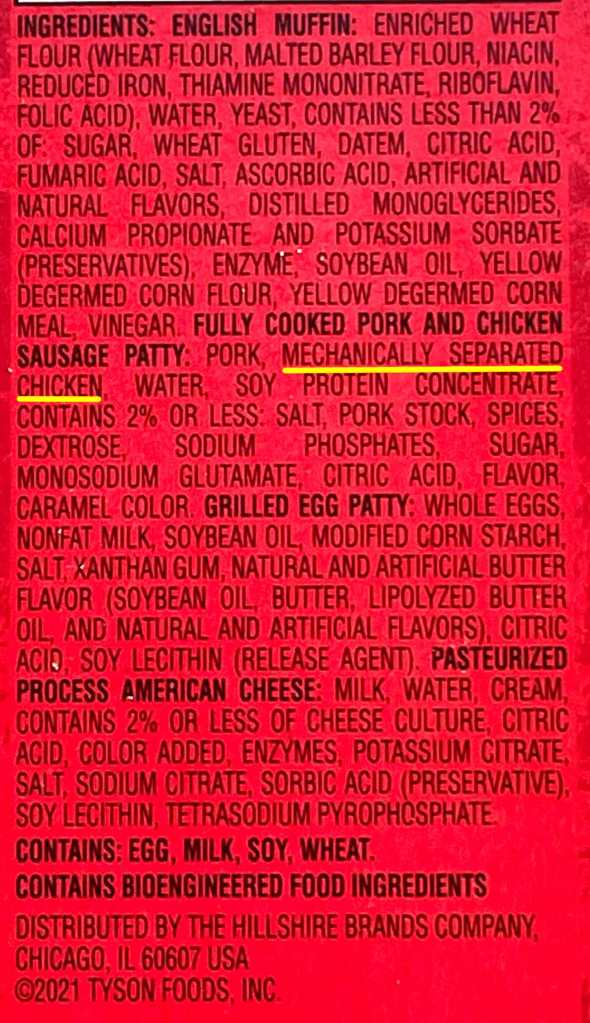
Dear Tyson Consumer Relations Team,
I hope this letter finds you well. I am writing as a long-standing and loyal consumer of your Jimmy Dean product range, specifically the English Muffin Sausage, Egg & Cheese Sandwiches. I have appreciated and enjoyed your products for many decades, and they have been a staple in my household since Jimmy Dean introduced his line in the late 1960s.
However, I recently discovered some information on the packaging of this product that left me feeling disappointed and deceived. Upon scrutinizing the ingredients list, I learned that the sausage, as advertised on the front of the package, is not purely pork, as I had assumed, but also contains mechanically separated chicken. This was a surprise, as the product’s marketing and branding led me to believe I was consuming a higher-quality product.
I understand that Tyson is likely meeting all legal requirements in labeling. Still, the fact that this crucial information about the content of your sausage is not immediately visible or accessible to the consumer seems, frankly, deliberately deceptive. The information is tucked away in tiny print on one of the side panels, which many consumers, including myself, might easily overlook.
I find it disheartening that Tyson, a brand I have trusted for so long, seems to take such measures to hide the presence of what many consumers would consider to be a cheap filler meat in a premium product. Other manufacturers appear to have no issue with upfront disclosure about their product’s ingredients, leading me to wonder why Tyson opts for a different approach.
It feels to me like a betrayal of the quality and transparency that Mr. Jimmy Dean himself advocated when he marketed his products as “pure pork sausage.” I am sure I am not alone in feeling that Tyson has strayed far from this ideal.
I truly enjoy the Jimmy Dean English Muffin Sausage, Egg & Cheese Sandwiches, and I would like to continue purchasing this product. However, my personal principles dictate that I cannot support a product that I believe is deceptively marketed.
In conclusion, I hope you will take my feedback into account and consider making your product ingredients more transparent to consumers. I believe this action would enhance trust, increase consumer satisfaction, and align more closely with Jimmy Dean’s original values of quality and honesty.
Thank you for your time and consideration.
Yours sincerely,
Leigh T. Hanlon

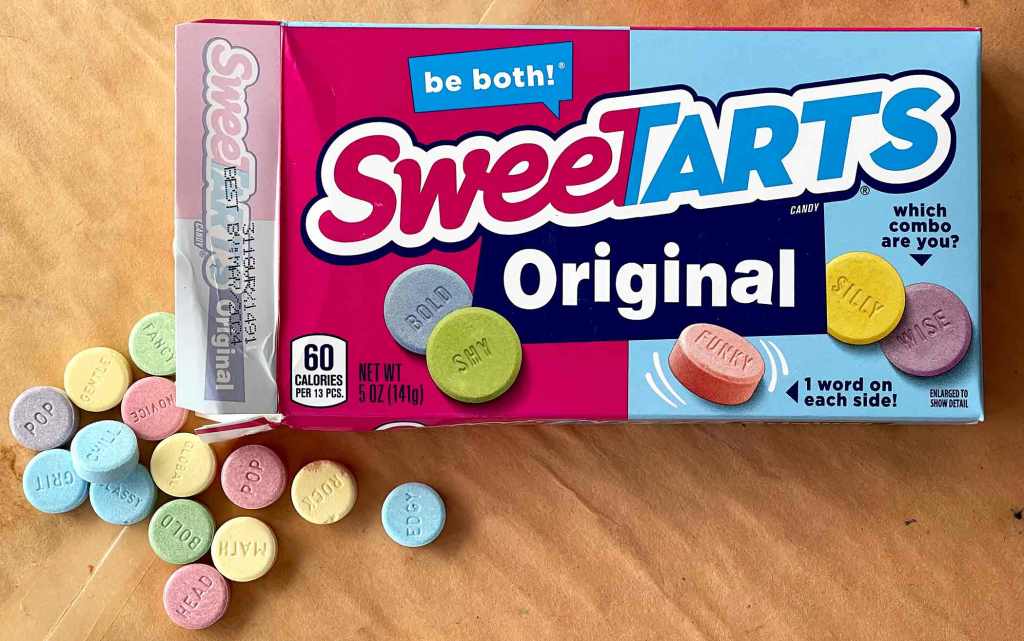
Morrison, Colorado, the early 1960s. No street address, just a big-ass mailbox on a Rural Route. I spent my days in 4-H, raising sheep, a pig, chickens, and ducks. Tried to tame our Shetland pony from hell and yearned to be one of the cool kids who rode in the Westernaires.
Out past our back field, U.S. 285 bulked up like Stallone for a Rambo flick, ballooning from two to four lanes as Colorado lit the fuse for its population explosion.
Up the road, you could see Lakehurst, a world of tomorrow whose show homes featured built-in vacuum cleaners. No need to haul that bulkiy canister upstairs and down — just carry that hose from room to room and plug it into any strategically located wall receptacle connected to a central vacuum in the basement.
But forget all that, I’m here to talk SweeTarts.
Back then, getting candy wasn’t a stroll to 7-Eleven. You’d have to talk your parents into driving you to Safeway or King Soopers miles away.
But me and the local gang discovered a gold mine. Residents at a reform school for girls a quarter-mile away ran a little commissary. Like some twisted Willy Wonka setup, they’d sell candy to the staff, inmates, and neighborhood kids.
So there I was, my pocket change jangling louder than Elvis’ hips.
I walked in, eyeing those shelves like I’d hit the jackpot in Vegas. Laid my coins down. “Gimme a SweeTarts,” I told the girl behind the counter. To my disappointment, she looked more like the girl next door than the girl behind some outlaw biker.
First bite? I hit the motherlode. A punch of tang and sweet; it was like the Beatles and the Stones jamming in my mouth. A rock concert of flavor. Each color a different opening act, all leading to that headliner — pure satisfaction. And from then on, I was hooked. . .
Bad girls and good candy!
Years roll by. Life’s been a spaghetti western of ups and downs, but those SweeTarts? They stayed the same.
So here’s my toast to SweeTarts, the candy of outlaws and reform school rascals. Whether you’re from the country or the big city doesn’t matter. Those little discs pack a punch like Ali.
And if you’ve never had ’em? Well, what are you waiting for?

Unearthing delightful surprises is a hobby of mine, especially when they blend nostalgia with a touch of elegance.
Today, I chanced upon such a gem.

Fans of the 1960s classic TV series “Land of the Giants” will fondly recall Gary Conway, who portrayed Captain Steve Burton with panache. Little did many of us know, Conway, alongside his wife, former Miss America Marian McKnight Conway, has been cultivating another passion: winemaking.
Their operation, the Carmody McKnight Estate Winery, is in picturesque Paso Robles, California, about 30 miles north of San Luis Obispo.
If the allure of a vineyard owned by such a dynamic duo isn’t enticing enough, here’s the cherry on top: They’re releasing a limited-edition vintage wine inspired by “Land of the Giants.”
While many celebrities, like Francis Ford Coppola, Fess Parker, and Sam Neill, have been drawn to the romantic charm of vineyards, Gary Conway’s and Marian McKnight Conway’s venture stands out.
Their commitment to a special release celebrating a golden era of television while passionately crafting wines in the heart of California’s wine country is unique.
The Carmody McKnight Estate Winery is more than just a winery; it’s a testament to the Conways’ journey, blending the worlds of Hollywood glamour, beauty pageants, and exquisite winemaking.
So, cheers to Gary Conway, Marian McKnight Conway, and their labor of love that gifts us both memories and flavor.
By the way, you still have time to join these folks as well as Conway’s “Land of the Giants” costars Heather Young and Stefan Arngrim at a five-course release dinner on Aug. 26. Check out the news release below for more info.
NEWS RELEASE
Carmody McKnight Estate Winery Announces
Land of the Giants Collection
Land of the Giants Launch Party set for August 26
at Le Vigne Winery in Paso Robles
(Paso Robles, CA) — Carmody McKnight Estate Winery has announced the release of their new “Land of the Giants” collection. The initial release includes the 2019 Estate Colossal Cabernet Sauvignon and the 2019 Estate Colossal Cuvee. A five-course dinner created by Le Vigne Executive Chef Walter Filippini celebrating the release is scheduled for August 26 in Paso Robles.
Originating from Carmody McKnight’s legendary volcanic West Paso Robles vineyard, the special series of Bordeaux varietal wines are hand-crafted by Winemaker Anthony Gallegos. Gallegos continues the Carmody McKnight tradition of long barrel aging with minimal intervention. The 2019 Estate Colossal Cabernet and Cuvee both show off the incredible vintage of the nutrient rich volcanic West Paso Robles vineyard. These are serious complex, fruit-forward, giant Bordeaux wines to be enjoyed now and for decades. The Colossal Cuvee blends Merlot, Cabernet Franc, and Cabernet Sauvignon.
Star of the cult science fiction TV series, “Land of the Giants” , Gary Carmody Conway is, along with his wife, former Miss America Marian McKnight Conway, the proprietor of Carmody McKnight Estate Winery. The Irwin Allen series is one of the most popular TV series on a worldwide basis ever, airing on hundreds of stations internationally.
Attending the dinner and available to mingle with guests are original cast members Gary Conway (Captain Steve Burton), Heather Young (Betty Hamilton) and Stefan Arngrim (Barry Lockridge).
The “Land of the Giants” Cabernet Sauvignon will be paired with the second course of Red Wine Cavatelli with Pancetta & Asiago. The Colossal Cuvee is featured in the third course alongside Captain Burton’s Braised Bison Short Ribs.
Also poured at the launch dinner alongside the first course of Betty’s Beet Carpaccio with Balsamic Glaze and Fried Capers will be Carmody McKnight’s 2019 Forever Miss America Cabernet Franc. From the sale of every bottle from the Forever Miss America collection, the winery bestows a gift to the Forever Miss America Scholarship Fund. This fund has provided decades of commitment to the economic and social advancement of all women through education opportunities and career resourcing.
The dinner opens and closes with courses paired with wines made by the Conways’ daughter Kathleen. Little People Appetizers will be served with K Estate Sparkling, and the dessert, Very Barry Semifreddo, is matched with her K Estate Port.
The “Land of the Giants” wine collection labels are designed by renowned comic book artist John Peter Britton who specializes in producing artwork for fantasy and science fiction genre television. They depict Gary Conway’s character, Captain Steve Burton, being held captive in the hand of a giant.
The “Land of the Giants” release dinner will be held on Saturday, August 26, at Le Vigne winery located at 5115 Buena Vista Drive, Paso Robles, California, 93446. The dinner begins at 6:30 p.m. and tickets are $132 per person, including tax and gratuity. To purchase tickets, please go here.
About Carmody McKnight Estate Winery
Established in 1968 by former Miss America Marian McKnight Conway and actor/artist Gary Conway, Paso Robles-based Carmody McKnight is credited for pioneering the West Paso Robles AVA – Adelaida subdistrict now recognized as a premium viticultural region for Bordeaux and other noble varietals. Located seven miles from the Pacific Ocean and climatically protected by the Santa Lucia Mountains, the legendary estate vineyard, with its three volcanoes, possesses the rarest of viticulturally rich soils making it the epitome of sustainability. The region is also known for its perfect Mediterranean temperature range and climate conditions. Carmody McKnight produces award-winning, limited release Cabernet Sauvignon, Merlot, and Cabernet Franc varietal wines. Allocation list members enjoy exclusive access to limited release collector series wines including Land of the Giants and Forever Miss America wines that support women’s educational scholarships.

Gruel, that much-maligned “delicacy,” has quite the checkered past. Thanks to good ol’ Charles Dickens and his tales of woe, the mere mention of gruel is enough to transport us to the dingy, squalid poorhouses of the Industrial Revolution. Ah, those were the days, when watered-down grains were the height of culinary sophistication for the great unwashed.
Fast forward to the present day, and what do we find? Well, it appears that we can’t escape the clutches of gruel, no matter how much we’d like to. Of course, now we’ve gotten smart and slapped new names on it to make it more palatable. “Oatmeal” in the U.S., “congee” in China. We’ve basically put lipstick on a pig and called it a day.
So, folks, the joke’s on us. Gruel never left our side. It just goes to show, you can’t keep a bad dish down!
Basic All-Purpose Gruel
Ingredients
• 1/2 cup of any grain, though it won’t make much difference.
• 2 cups of water, to dilute any remaining taste. (If preparing Gruel a la Gandhi, substitute fresh urine for water.)
• A pinch of salt, the only source of flavor.
• Optional: sweeteners or savory spices, but they’re unlikely to help much.
Instructions
Correction
A recent recipe for Twice-Baked Butternut Squash Surprise incorrectly listed an ingredient. It is polenta, not placenta.
— Compiled by Caitlyn Mahoon

Ladies and gentlemen, welcome to the incredible world of melon matchmaking.
Our quest? To find “The Ripe One” amid a sea of pretenders. We’re about to delve into the thrilling techniques of sniffing, squeezing, and thumping — the Holy Trinity of melon mastery.
First off, sniffing. Yes, this requires getting up close and personal. Don’t be shy; your nose is a high-tech fruit detective. If it’s a cantaloupe, a sweet, slightly musky perfume whispers, “Take me, I’m yours.” Watermelons, however, are tight-lipped. They don’t spill their secrets to the casual sniffer.
Then, there’s squeezing. Let’s clear this up — no melon likes to be manhandled. Squeezing is just plain rude, no matter the melon. A gentle press at the ends should suffice. If it’s a smidge soft but not mushy, it’s ripe.
On to the final act: thumping. Now, I know we all fancy ourselves as fruit virtuosos, thumping away like we’re playing a bongo. In reality, this method is hit-or-miss, mostly miss. An echoing, hollow sound signifies ripeness in watermelons. As for cantaloupes, they’re just not into drum solos.
So, is there a universal, one-size-fits-all test for all melons? Sorry, folks, but it’s a no. Different melons, different manners. Just remember, a polite sniff and a respectful press go a long way.
Moral of the story? Don’t be a thumper, be a sniffer. And remember, melons, like people, deserve a gentle touch.
— Caitlin Balloon
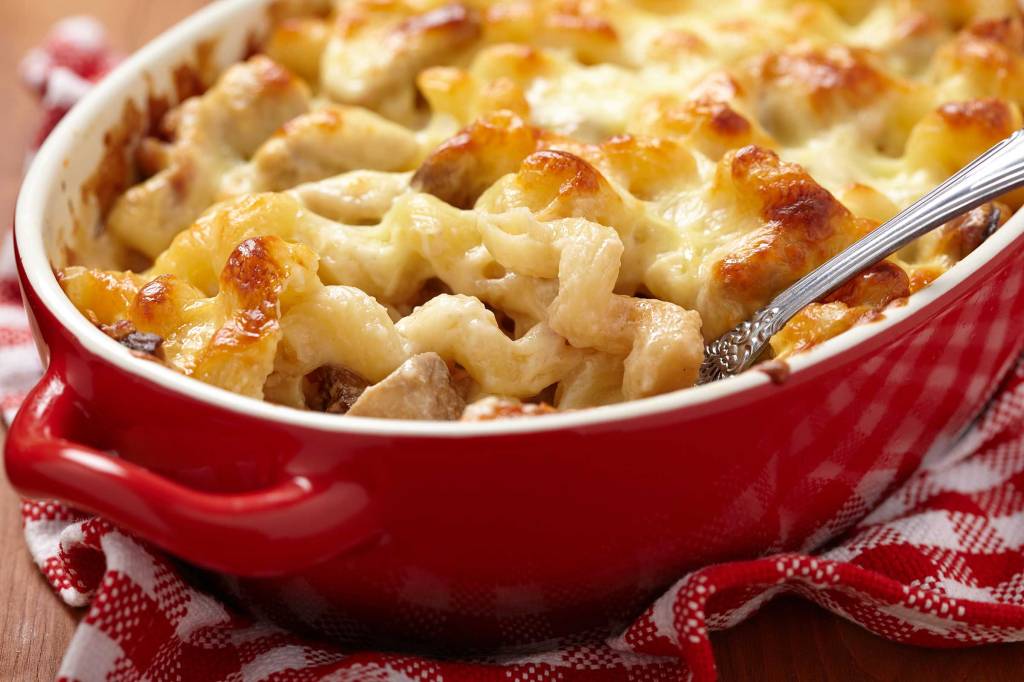
This macaroni and cheese recipe is steeped in rich American culinary history. It was introduced to the American colonies by James Hemings, an accomplished chef and enslaved man owned by Thomas Jefferson.
In 1784, Hemings accompanied Jefferson on his tenure in Paris, where he trained under prestigious French chefs of the era, immersing himself in French cooking. Hemings’ unique culinary journey let him infuse French sophistication into American cuisine upon his return.
Although Hemings introduced meringues and crème brulée to Americans, macaroni and cheese is his most celebrated contribution.
As you prepare this dish, reflect on Hemings’ legacy and his instrumental role in shaping America’s culinary landscape and providing us with our No. 1 comfort food.
James Hemings’ Macaroni and Cheese
Ingredients
1 pound macaroni
4 cups milk
4 tablespoons butter
4 tablespoons all-purpose flour
4 cups shredded cheddar cheese
1/2 teaspoon salt (to taste)
1/4 teaspoon black pepper (to taste)
1/4 teaspoon ground nutmeg
1/4 cup breadcrumbs (optional)
Instructions
Enjoy your homemade macaroni and cheese, inspired by the dish introduced to the United States by James Hemings and served at Thomas Jefferson’s home.